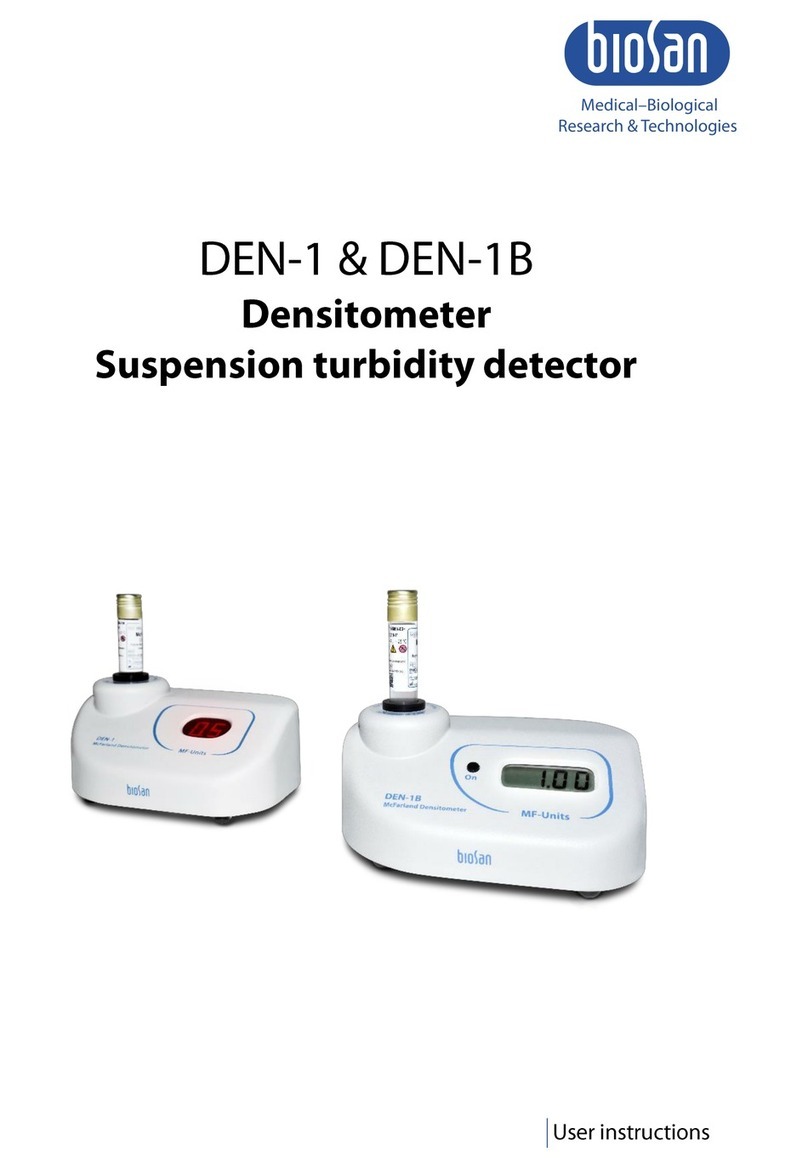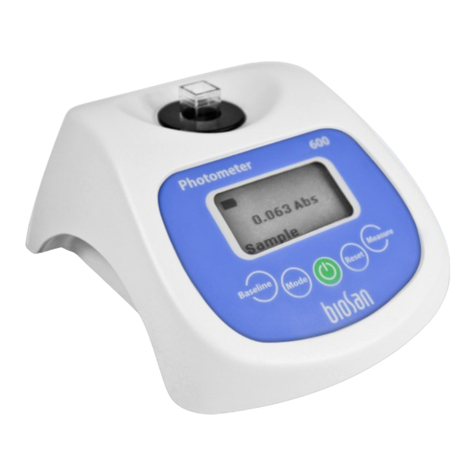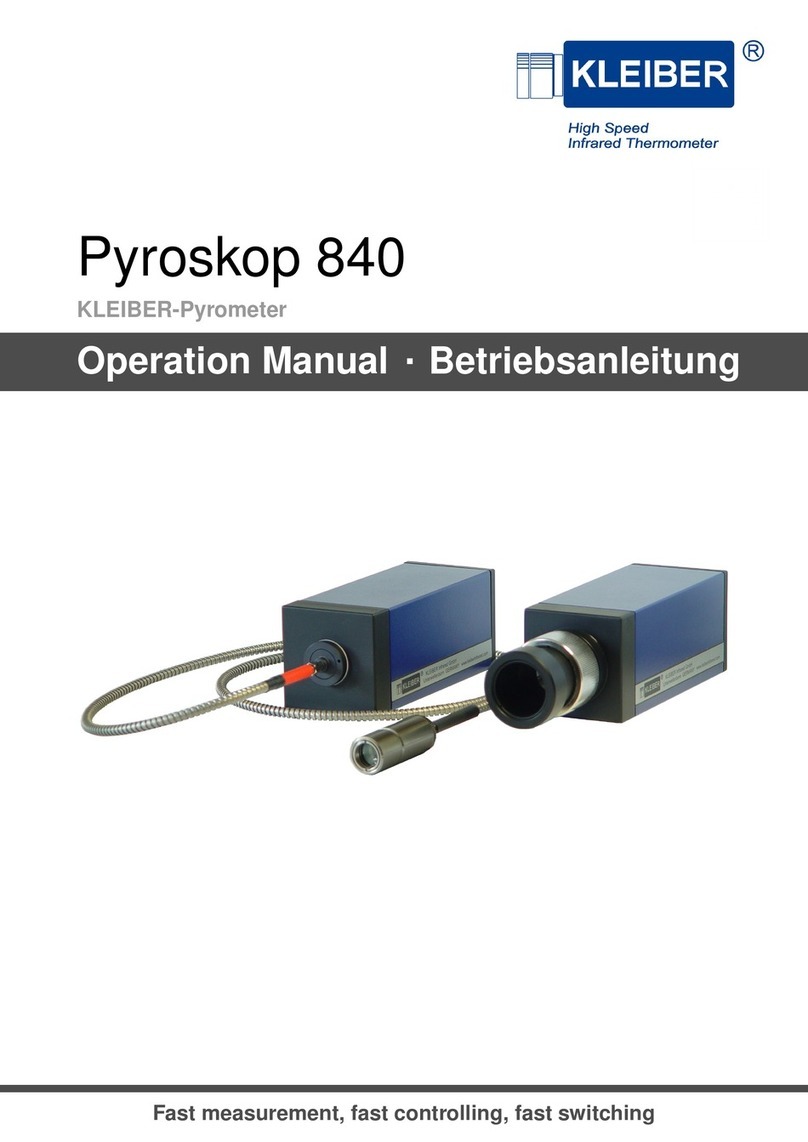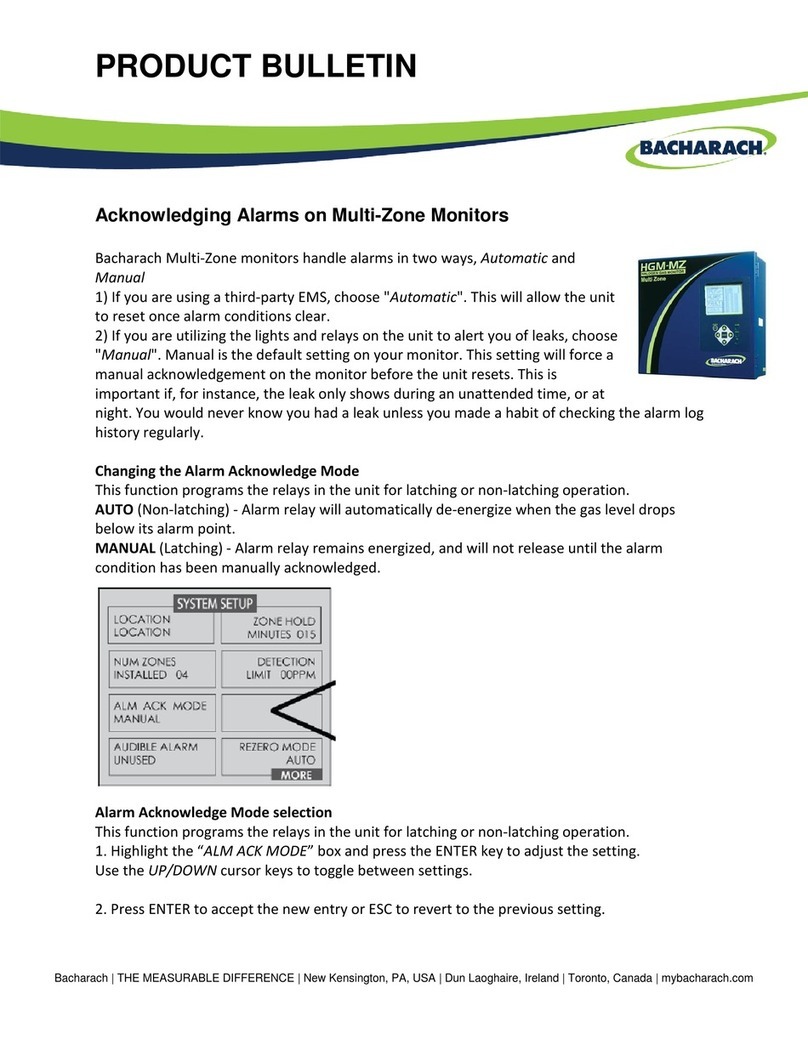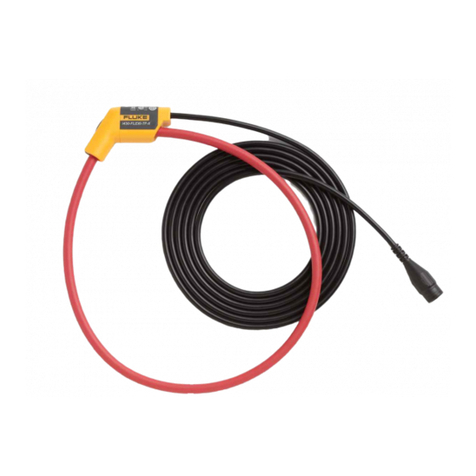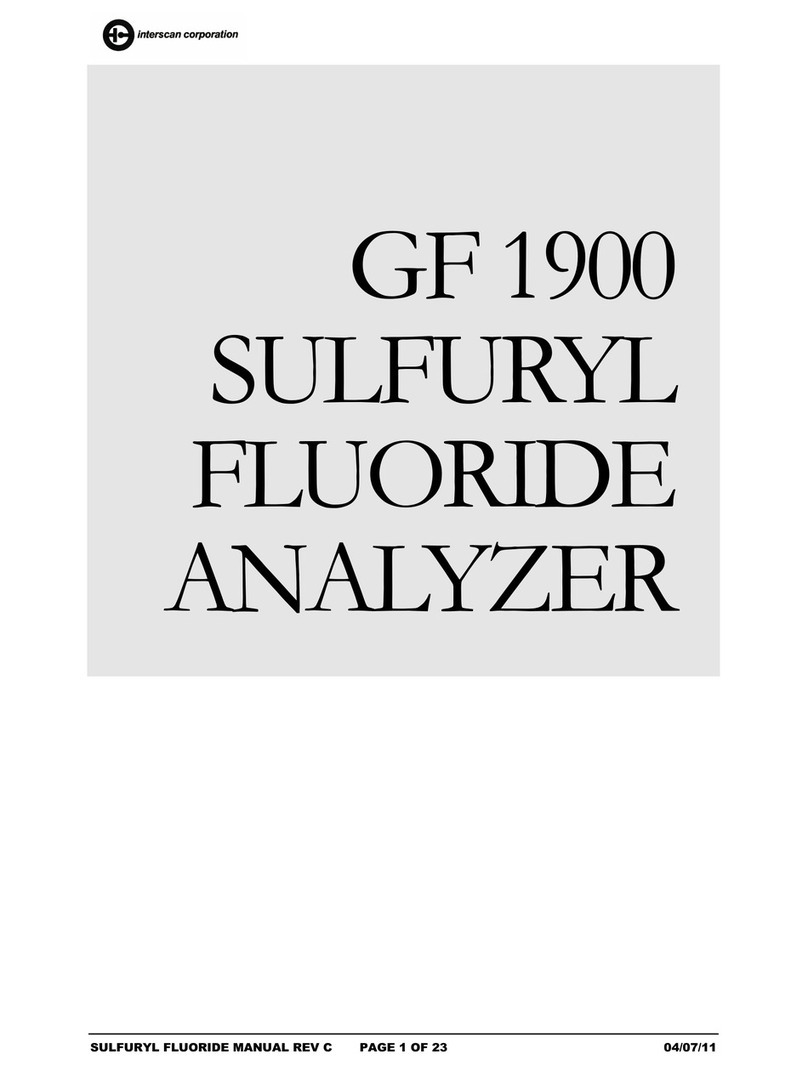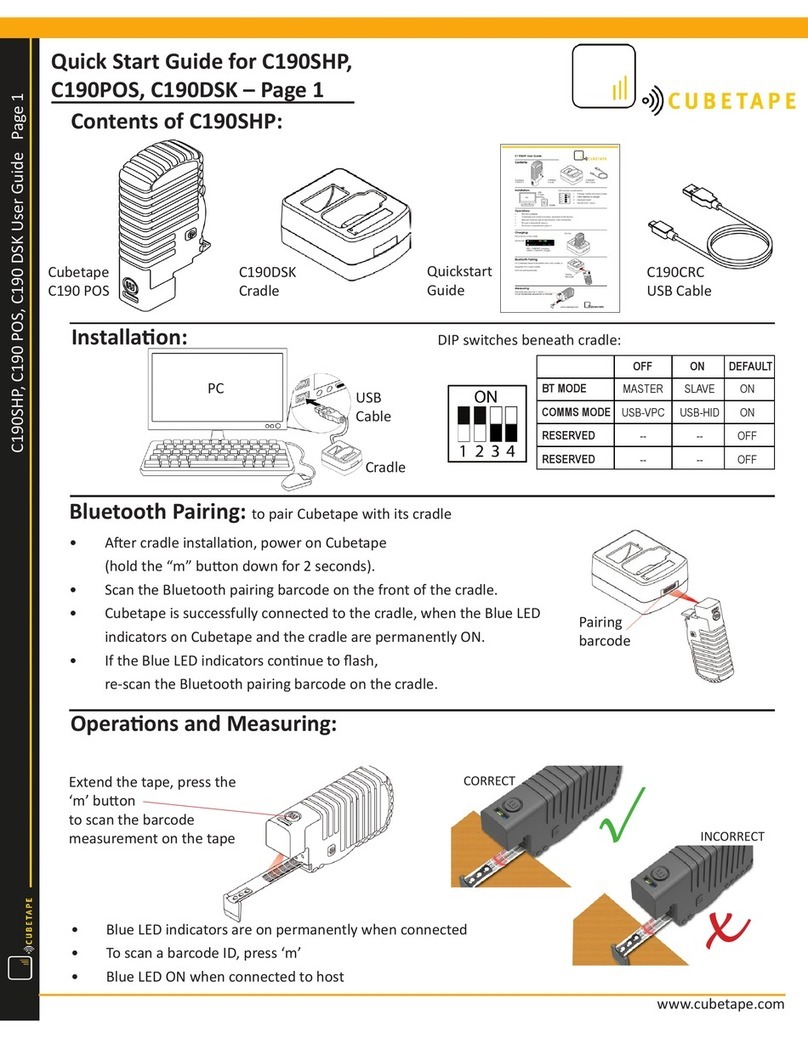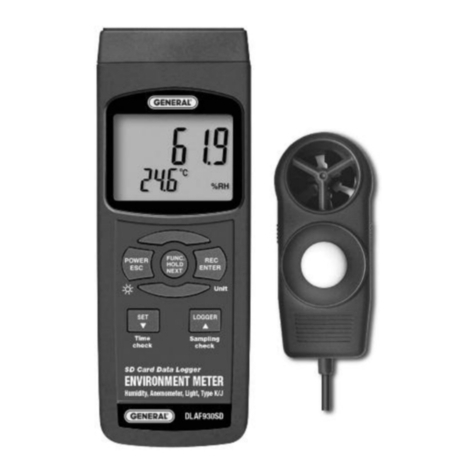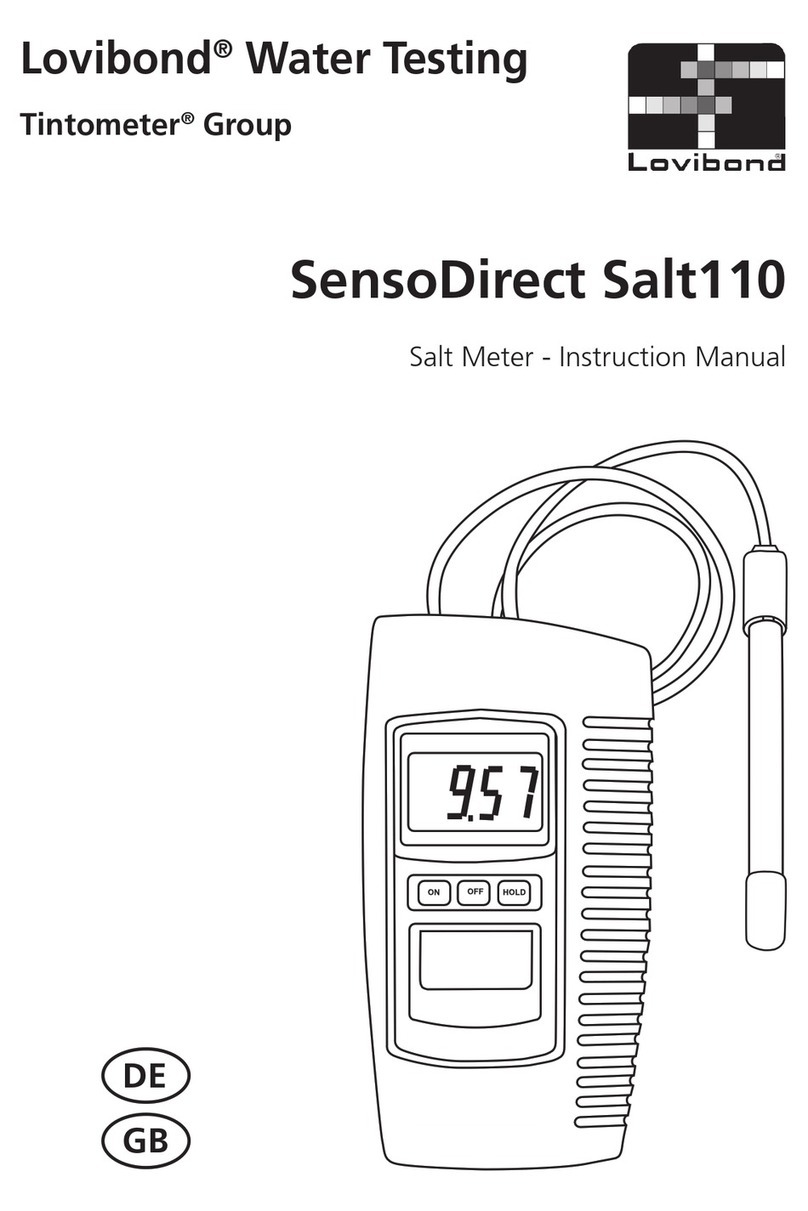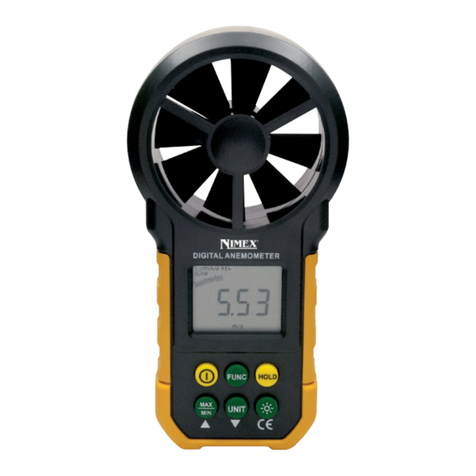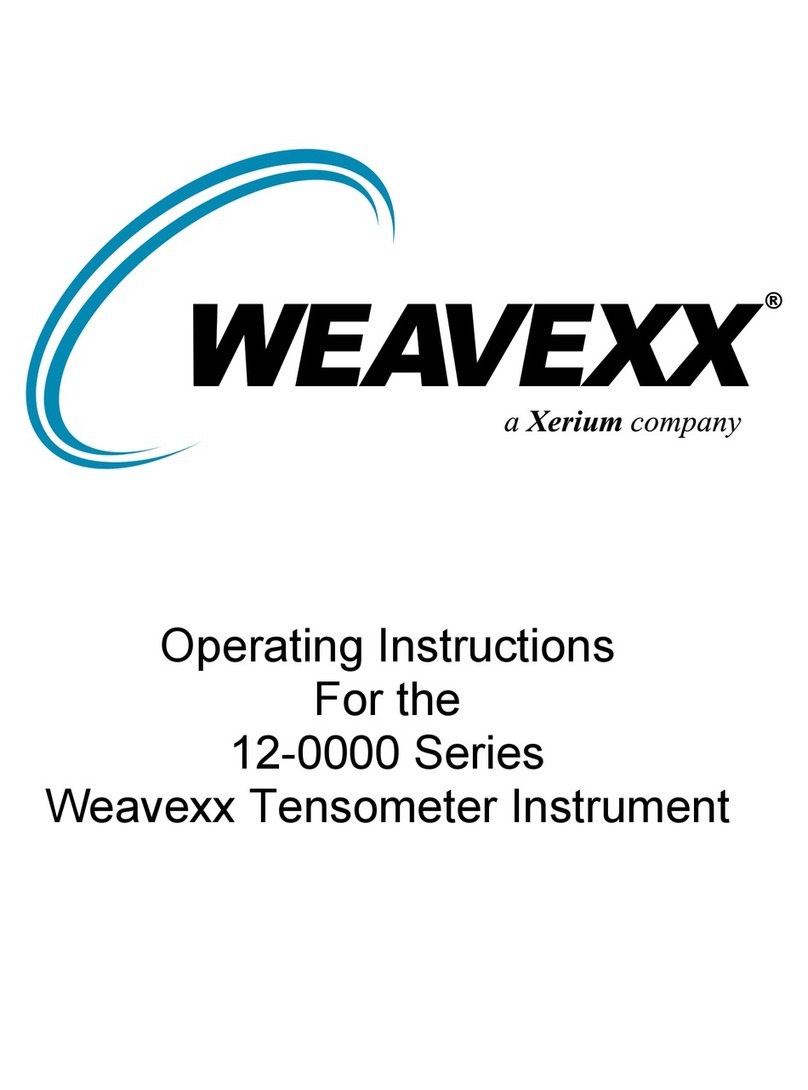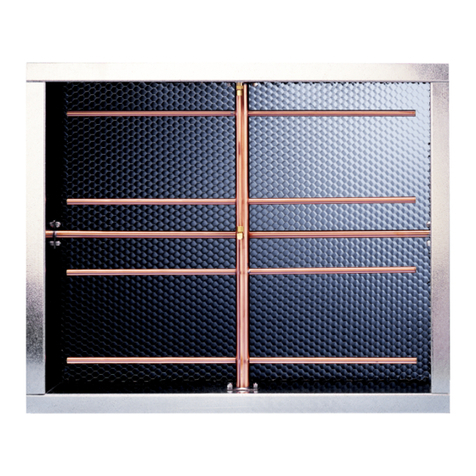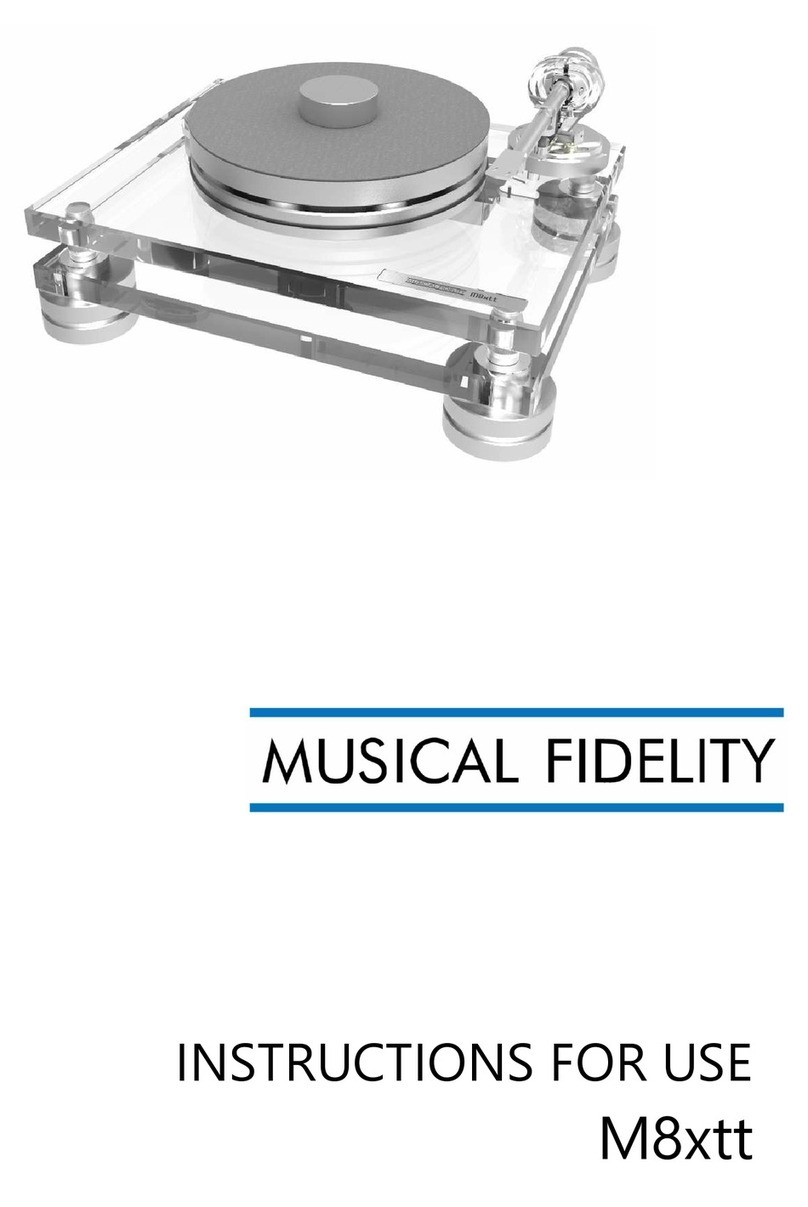Biosan HiPo MPP-96 User manual


2

3
Contents
1. Safety Precautions...................................................................................................4
2. General Information .................................................................................................5
3. Getting started..........................................................................................................6
4. Operation .................................................................................................................7
5. Unit verification.......................................................................................................10
6. Specifications.........................................................................................................12
7. Maintenance...........................................................................................................14
8. Warranty and Claims..............................................................................................14
9. EU Declaration of Conformity.................................................................................15

4
1. Safety Precautions
The following symbol means:
Caution: Make sure you have fully read and understood the present Manual
before using the equipment. Please pay special attention to sections
marked by this symbol.
GENERAL SAFETY
Use only as specified in the operating manual provided.
Save the unit from shocks and falling.
Store and transport the unit at ambient temperatures between -20°C and +60°C and
maximum relative humidity of 80%.
After transportation or storage, keep the unit under room temperature for 2 to 3 h
before connecting it to the mains.
Before using any cleaning or decontamination methods except those recommended
by the manufacturer, check with the manufacturer that the proposed method will not
damage the equipment.
Do not make modifications in design of the unit.
Do not place the optic parts under direct light.
ELECTRICAL SAFETY
Connect only to an external power supply with voltage corresponding to that on the
serial number label.
Use only the external power supply provided with this product.
Ensure that the power switch and external power supply are easily accessible during
use.
Disconnect the unit from the external power supply before moving.
This equipment is connected and controlled by PC. Please ensure that the attached
PC itself conforms to safety and EMC standards.
If liquid penetrates into the unit, disconnect it from the external power supply and
have it checked by a repair and maintenance technician.
Do not operate the unit in premises where condensation can form. Operating condi-
tions of the unit are defined in the Specifications section.
DURING OPERATION
Do not operate the unit in environments with aggressive or explosive chemical mix-
tures. Please contact manufacturer for possible operation of the unit in specific at-
mospheres.
Do not operate the unit if it is faulty or was installed incorrectly.
Do not use outside laboratory rooms.
Set up the PC display with the correct viewing position, free from glare and with ap-
propriate brightness and contrast settings.
Close the lid after placing or removing the microplates.
Do not open the lid during measurements.
BIOLOGICAL SAFETY
It is the user’s responsibility to carry out appropriate decontamination if hazardous
material is spilt on or penetrates into the equipment.

5
2. General Information
Microplate Photometer HiPo MPP-96 is a compact tabletop device for analysing the
results of ELISA and microbiological studies by measuring optical density in 96-well micro-
plates. Instrument is controlled by and outputs data to computer.
Scheme 1. Optical scheme of the unit
HiPo MPP-96 is supplied with analysis software QuantAssay. Software performs a
single scanning with option of a second scanning on reference channel available. When
using QuantAssay, it is possible to program the analysis of the following assays:
Quantitative assays: the ability to install up 20 standards and choose fit model from
5/4 parameter logistic, linear and piecewise linear models.
BestFit function for the selection of the best calibration curve.
Multiplex analysis - up to 7 different tests on the same plate.
Qualitative assays: the ability to install up to 8 types of controls (weak positive, strong
positive, negative, etc.).
Avidity / affinity assay.
Save, load and export results.
Create visual reports.
Together with standard light filters (with wavelengths of 405, 450, 492, 620 nm), it is
possible to order light filters in the range from 400 to 700 nm, installed by manufacturer. See
the list on page 12 in the Specifications section.
HiPo MPP-96 is factory calibrated using Thermo Scientific Multiskan Verification
Plate with 8 wavelengths. Certificate of verification is included with the unit.
8 Si photodiodes
8 apertures
8-well row #0,
for self-calibration of OD
8-channel optical fiber
White LED (430-700 nm)
Purple LED (400-430 nm)
Mechanical Mirror
Filter wheel with 8 places
Lens

6
3. Getting started
3.1. Unpacking
Remove packing materials carefully and retain them for future shipment or storage of
the unit. Examine the unit carefully for any damage incurred during transit. The war-
ranty does not cover in-transit damage. Warranty covers only the units transported in
the original package.
3.2. Complete set. Package contents:
Standard set
- HiPo MPP-96 Microplate photometer with installed
interference filters (405, 450, 492, 620 nm)......................................................1 pce.
- USB flash drive with software...........................................................................1 pce.
- USB connector cable .......................................................................................1 pce.
- External power supply .....................................................................................1 pce.
- Software operation manual ..............................................................................1 pce.
- Operating manual............................................................................................1 copy
- Certificate of verification..................................................................................1 copy
Optional accessories
- Light filters (custom, 400-700 nm) ............................................................on request
- Verification microplate set .....................................................................on request
Verification microplate set
3.3. Setup.
- Plug the external power supply into the socket at the rear side of the unit (fig. 2/2).
- Place the unit on the horizontal even working surface;
- Insert the USB flash drive with software and install the QuantAssay software, follow-
ing the instructions provided in the software installation and operation manual.
3.4. Custom light filters.
If you are using custom filters, fill in the following table. The manuals and software
reference channels with custom filters as Channels from 1 to 4.
Channel
Wavelength
Channel
Wavelength
Channel 1
nm
Channel 1
nm
Channel 2
nm
Channel 2
nm

7
4. Operation
4.1. Connect the external power supply to themains. Switch the Power switch on the rear
panel of the unit to position I(on, fig. 2/1). The Power LED light (fig. 1/3) turns on.
4.2. Connect the unit port (fig. 2/2) and the PC port with the USB cable. Turn on the PC.
The PC LED light (fig. 1/1) turns on.
4.3. Lift the lid and place the microplate on the sliding platform.
Position the microplate so that the top left corner of the microplate (designated A1)
is placed next to the A1 label tag (fig. 3/1). Close the lid.
Note. Measurements can be affected by uneven or heterogeneous well
contents. Visually inspect the plate for foaming, opaqueness, bubbles
or particles in the well
4.4. Starting the measurement.
Attention! Make sure that the QuantAssay software is installed on the PC.
Attention! Full description of the software can be found in the included software
installation and operation manual.
4.4.1. Launch the software on the PC. Navigate to the Available units tab.
4.4.2. Select the wavelengths required for measurements.
4.4.3. Optionally: choose a reference channel and an option to shake before measurement.

8
Four mixing speeds are available; mixing time can be set between 3 and 15 seconds.
4.4.4. Press Start button. The Measurement LED light (fig. 1/2) turns on.
Attention! Do not open the lid during measurements!
4.5. Measurement processing. After an 8-second measurement, the software automat-
ically opens the Input data tab that displays all measurement results.

9
4.6. Data export. To export data in PDF, XLS or CSV formats, press the corresponding
button.
4.7. To save the data in Quant Assay file format, press Save button.
4.8. To export the data in the microplate format, press XLS 96 well button.
4.9. After completing the measurements, open the lid and remove the microplate, then
close the lid.
Attention! Do not leave the microplate in the unit!
4.10. After finishing the operation switch the Power switch to position O (off, fig. 2/1). Re-
move the external power supply from the unit.
Fig. 1. Front view of the unit
Fig. 2. Rear panel of the unit.
Fig. 3. Correct microplate placement

10
5. Unit verification
5.1. Checking the calibration.
If the user have any doubts in measuring precision, he may perform a basic control
check as follows:
5.1.1. No microplate method.
Remove microplate and close the lid. Perform measurement according to p. 4.4. Re-
sults should be between -0.003 and 0.005.
5.1.2. Clean microplate method.
Place a clean and empty microplate in the unit, and close the lid. Perform measure-
ment according to p. 4.4. Results should be between 0.030 and 0.060.
Note. For further information, please consult with the software operation
manual.
5.2. Using the verification microplate.
Precision of the unit is verified by the certified verification plate. Verification certificate
is enclosed in the standard set and is valid one year from verification date.
All verification procedures must be performed only by qualified and specially trained
personnel.
Note. Neutral filter absorbance of MULTISKAN™verification plates varies
from plate to plate, so we include an option to set the details of your
own verification plate. To edit the details, please consult with the soft-
ware operation manual, paragraph Editing a verification plate.
5.2.1. Lift the lid and place the verification plate on the sliding platform, then close the lid.
5.2.2. To run the certification test, you need to enter the developer mode. To do so, in soft-
ware, open a new experiment, focus on the table “Cell, Name, Sample Name, Type”
(fig. 4) by left clicking on the table area, and press Ctrl + N.
Fig. 4.

11
5.2.3. Following frame appears below (fig. 5):
Fig. 5. Verification test setup.
Enter the name of the operator, head of QC, QC company and manufacturer details
in corresponding fields (fig 5/1). Select the channels to test (fig. 5/4) and the number
of measurements to perform (fig. 5/2). We recommend a minimum of 20 measure-
ments. Press the Start button (fig.5/3).
5.2.4. When measurements are finished, press the Show Test Form button (fig. 5/5), then
press the Save to PDF button in the appeared Protocol tab to export the certificate:
Note. For further information, please consult with the software operation
manual.

12
6. Specifications
The unit is designed for operation in cold rooms, incubators and closed laboratory
rooms at ambient temperature from +4°C to +40°C in a non-condensing atmosphere and
maximum relative humidity 80% for temperatures up to 31°C decreasing linearly to 50%
relative humidity at 40°C.
6.1. Detection mode............................................................................... light absorbance
6.2. Light source................................................................................LED, self-calibrating
6.3. Photodetector........................................................................... 8 silicon photodiodes
6.4. Microplate requirements....................... ANSI/SLAS compliant 96-well (see Table 1)
..............................MicroWell™ MaxiSorp™, flat-bottomed, transparent polystyrene
6.5. Reading time, not more................................................................5 s per wavelength
6.6. Measuring modes..................................endpoint, kinetic, multi-label measurements
6.7. Measurement channels............................................................................................8
6.8. Reference channel...................................................................................................1
6.9. Optical density measurement range..........................................................0 - 4.3 OD
6.10. Resolution.................................................................................................. 0.001 OD
6.11. Accuracy (at 405, 450, 492, 620 nm)
0.000 –2.000 OD.....................................................................≤ (0.5 % + 0.010 OD)
2.000 –3.000 OD........................................................................≤ (1 % + 0.010 OD)
6.12. Precision / reproducibility (at 405, 450, 492, 620 nm)
0.000 –2.000 OD.....................................................................≤ (0.5 % + 0.005 OD)
2.000 –3.000 OD.....................................................................≤ (1.0 % + 0.005 OD)
6.13. Linearity
0.000 –2.000 OD...........................................................................................≤ 1.0 %
2.000 –3.000 OD...........................................................................................≤ 1.5 %
6.14. Filter optical range.................................................................................400 - 700 nm
6.15. Wavelength selection................................ 4 standard filters, space for up to 4 more
6.16. Standard filters.................................................................405, 450, 492 and 620 nm
6.17. Linear shaking.......................................................................4 amplitudes, 4 speeds
6.18. Linear shaking time setting.............................................................................3 - 15 s
6.19. Software................................................................................................QuantAssay
6.20. PC requirements .....................Intel/AMD processor, 1 GB RAM, Windows Vista/7/8
6.21. PC connectivity .................................................................................................. USB
6.22. Dimensions (WxDxH) ...................................................................140х300х130 mm
6.23. Weight*.............................................................................................................4.6 kg
6.24. Input current / power consumption...................................................12 V, 5 A / 60 W
6.25. External power supply.......................input AC 100-240 V 50/60 Hz, output DC 12 V
* Accurate within ±10%.

13
Up to four bandpass filters of wavelengths other than the standard can be fitted in the
unit per request. Following wavelengths are available (see LEDs’spectral power specifica-
tion on figure 6):
400 nm, 455 nm, 458 nm, 460 nm, 470 nm, 480 nm, 486 nm, 488 nm;
500 nm, 508 nm, 510 nm, 515 nm, 520 nm, 532 nm, 535 nm, 540 nm, 546 nm,
550 nm, 560 nm, 568 nm, 580 nm, 589 nm, 594 nm;
600 nm, 610 nm, 632 nm, 636 nm, 640 nm, 647 nm, 650 nm, 656 nm, 660 nm,
671 nm, 676 nm, 680 nm, 685 nm, 690 nm, 694 nm.
Fig. 6. Relative spectral power in relation to wavelength for photodiodes
(white and purple led maximum spectral power are not equal)
Table 1. 96-well plate dimensions
96-well plate
Dimension (mm)
Plate height
14.35
Plate length
85.48
Plate width
127.76
First well position X
14.38
First well location Y
11.24
Corner distance X
99
Corner distance Y
63
Optional accessories
Description
Catalogue number
Verification microplate
Microplate for annual verification of the unit
BS-050108-AK
Custom light filter
Up to four custom filters in the unit
-
Manufacturer is committed to a continuous program of improvement and reserves the
right to alter design and specifications of the equipment without additional notice.
0.0
0.1
0.2
0.3
0.4
0.5
0.6
0.7
0.8
0.9
1.0
300 350 400 450 500 550 600 650 700 750 800 850
Relative Spectral Power
Wavelength (nm)
White LED Purple LED

14
7. Maintenance
7.1. If the unit requires maintenance, disconnect the unit from the electric circuit and con-
tact Manufacturer.
7.2. All maintenance and repair operations must be performed only by qualified and spe-
cially trained personnel.
7.3. Cleaning and disinfection.
7.3.1. Standard ethanol (75%) or other cleaning agents recommended for cleaning of labor-
atory equipment can be used for cleaning and decontamination of the external parts
of the unit.
7.3.2. Do not use liquids to clean optical parts. Use air from rubber siphon to blow away any
particles.
8. Warranty and Claims
8.1. The Manufacturer guarantees the compliance of the unit with the requirements of
Specifications, provided the Customer follows the operation, storage and transporta-
tion instructions.
8.2. The warranted service life of the unit from the date of its delivery to the Customer is
24 months. Contact your local distributor to check availability of extended warranty.
8.3. The certificate of verification of the unit warrants the measurements for 12 months.
8.4. Warranty covers only the units transported in the original package.
8.5. If any manufacturing defects are discovered by the Customer, an unsatisfactory
equipment claim shall be compiled, certified and sent to the local distributor address.
8.6. The following information will be required in the event that warranty or post-warranty
service comes necessary. Complete the table below and retain for your records.
Model
HiPo MPP-96 Microplate photometer
Serial number
Date of sale

15
9. EU Declaration of Conformity
Unit type Microplate Photometer
Models MPP-96
Serial number 14 digits styled XXXXXXYYMMZZZZ, where XXXXXX is
model code, YY and MM –year and month of production,
ZZZZ –unit number.
Manufacturer SIA BIOSAN
Latvia, LV-1067, Riga, Ratsupites str. 7/2
Applicable Directives EMC Directive 2014/30/EU
LVD Directive 2014/35/EU
RoHS2 2011/65/EU
WEEE 2012/19/EU
Applicable Standards LVS EN 61326-1: 2013
Electrical equipment for measurement, control and
laboratory use. EMC requirements. General requirements.
LVS EN 61010-1: 2011
Safety requirements for electrical equipment for
measurement, control, and laboratory use. General
requirements.
We declare that this product conforms to the requirements of the above Directives
Svetlana Bankovska Sergey Dyachenko
Managing director R&D project manager

Biosan SIA
Ratsupites 7, build.2, Riga, LV-1067, Latvia
Phone: +371 67426137 Fax: +371 67428101
http://www.biosan.lv
Edition 1.07 –January 2017
Table of contents
Other Biosan Measuring Instrument manuals

